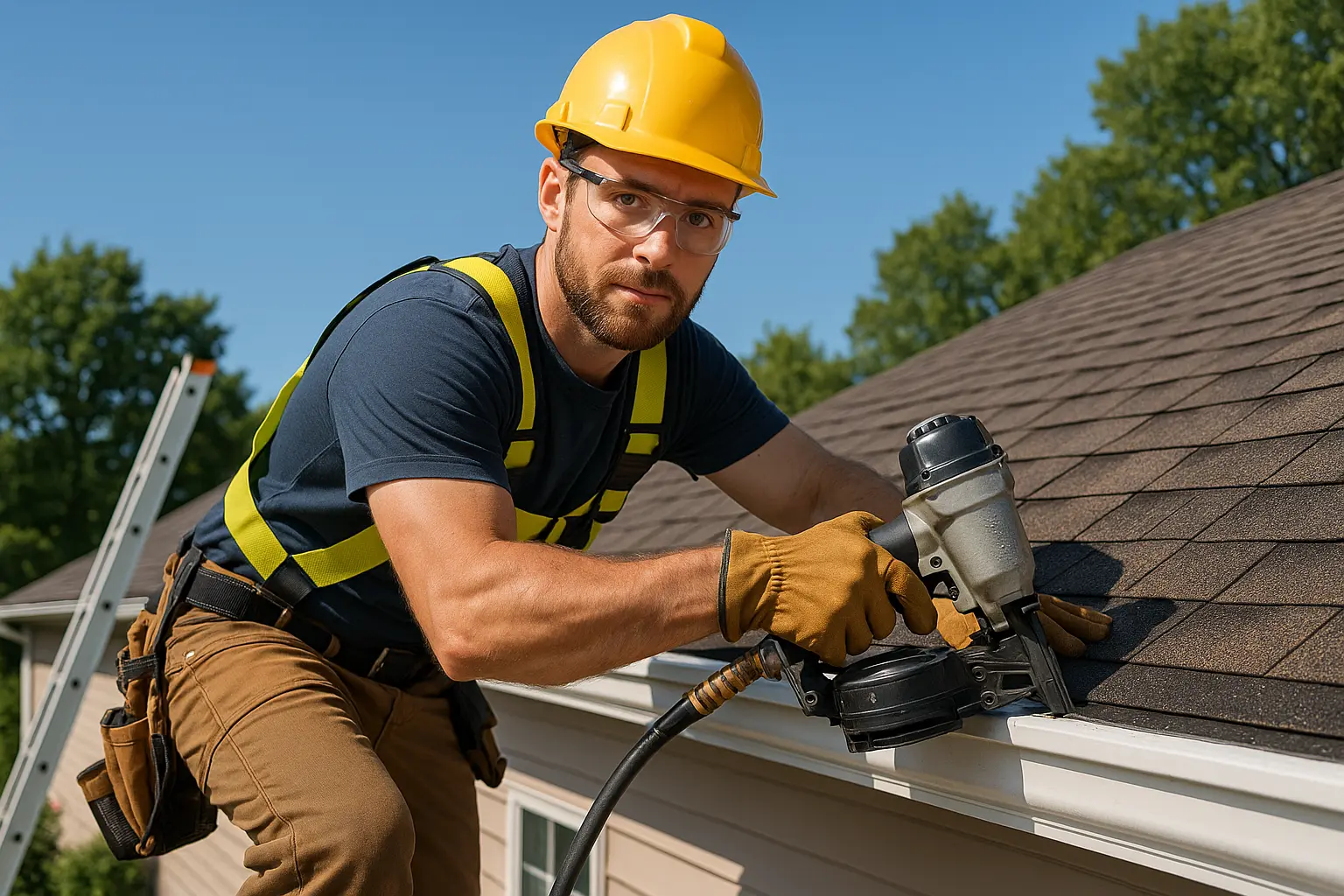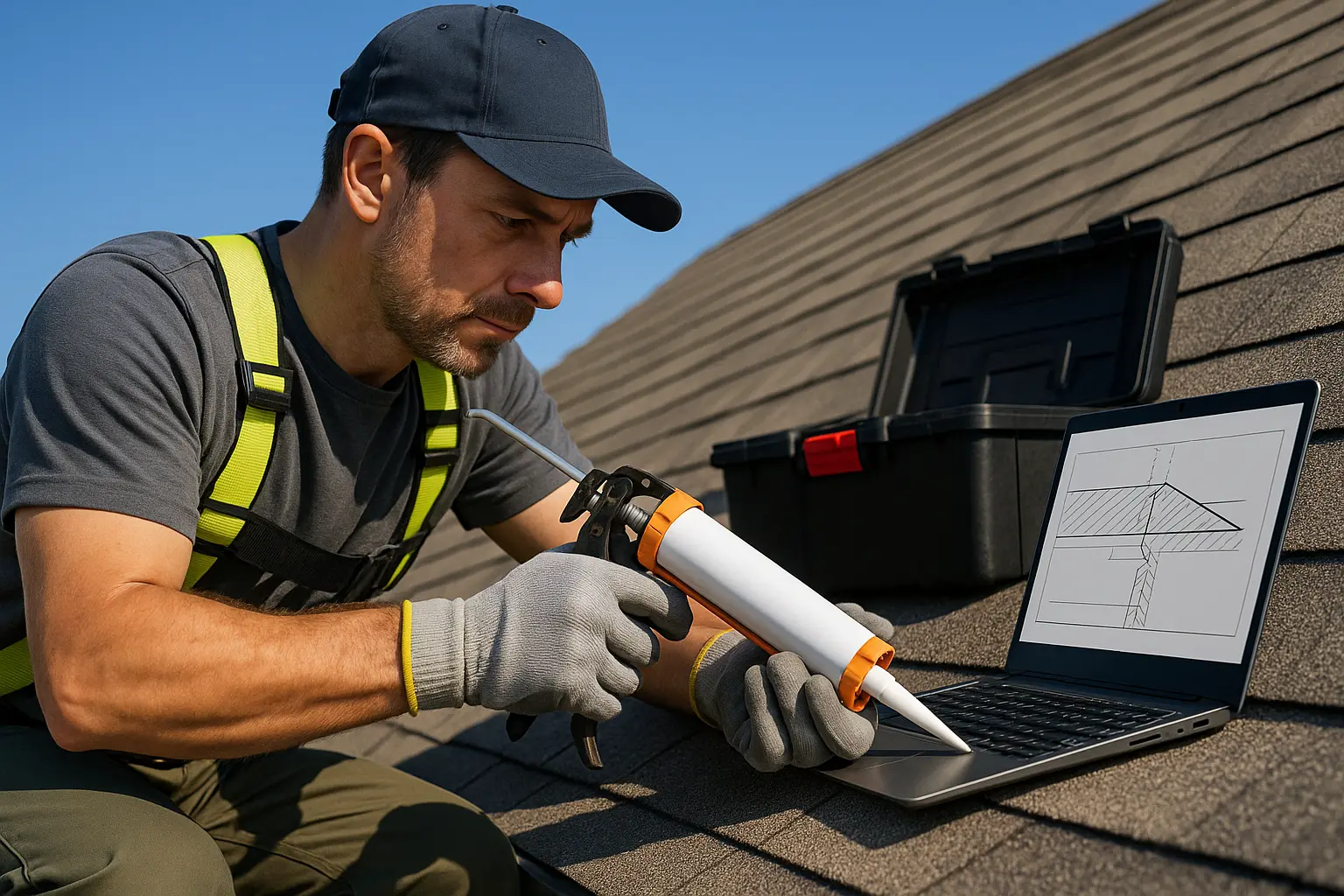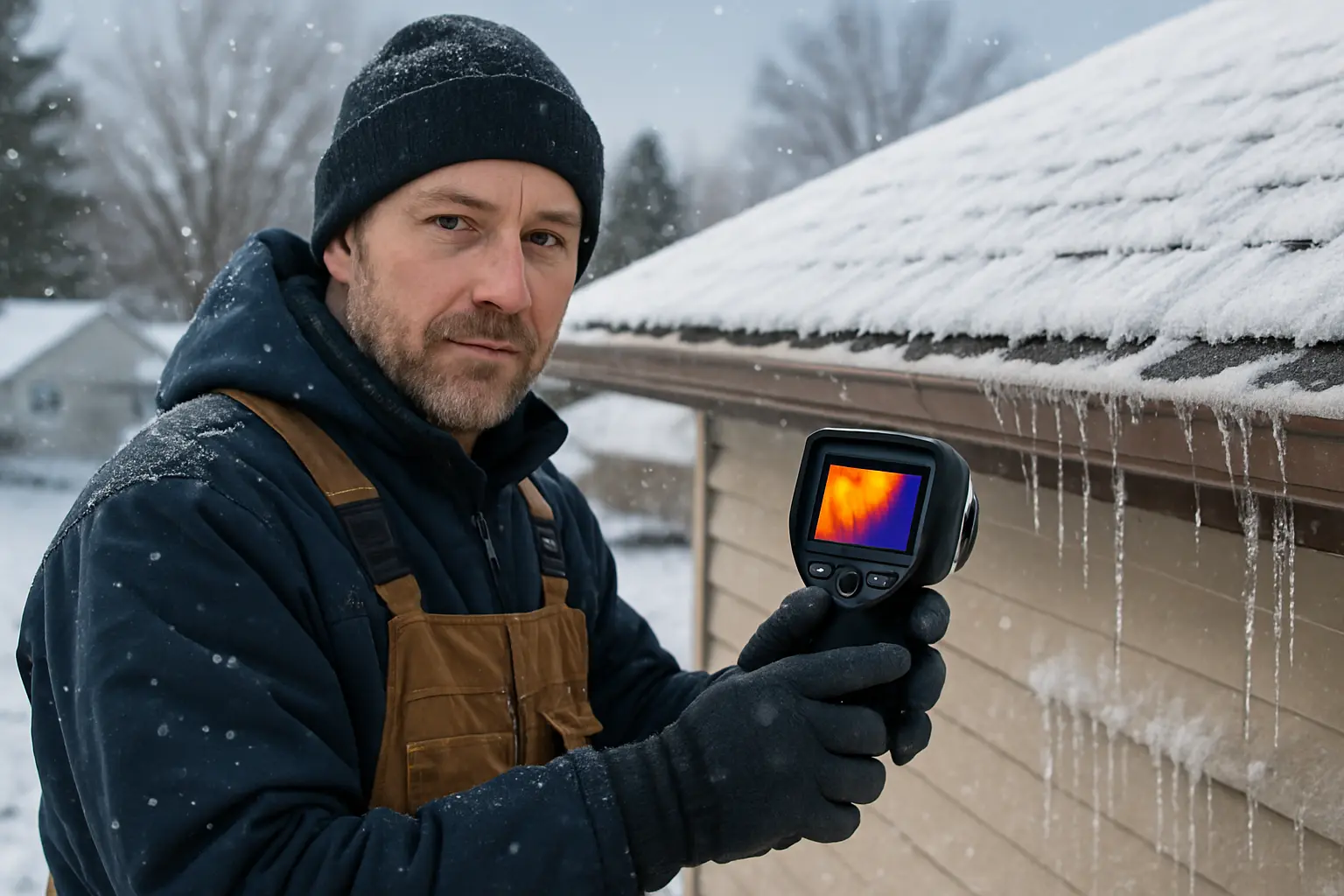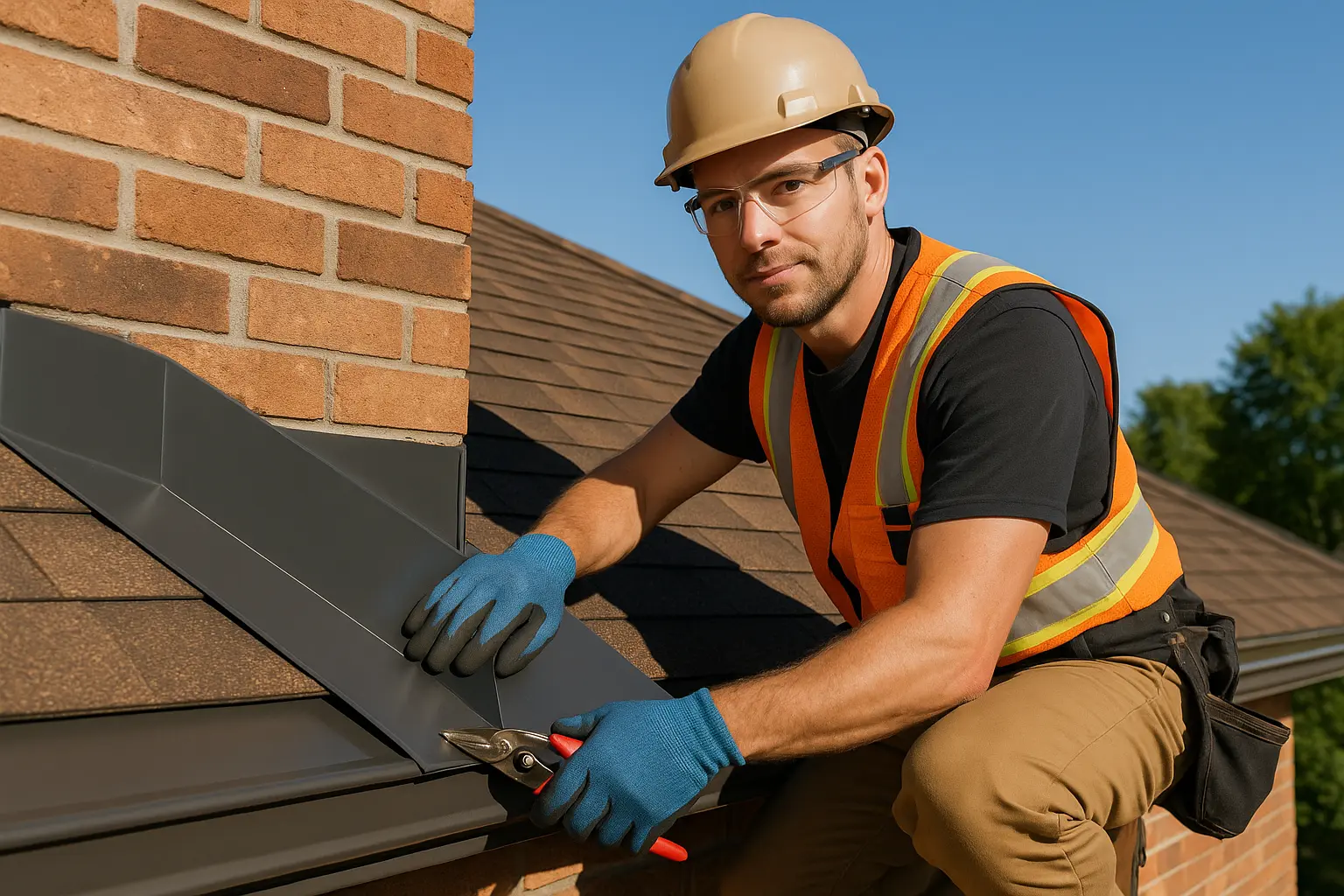Introduction
Giving your home a new roof isn’t just another project on the to-do list – it’s an investment in the lasting value and safety of your property. A fresh roof not only boosts the curb appeal of your house but also strengthens its structure and can help you save on energy costs. Whether you’re dealing with an old roof that isn’t holding up well or dealing with damage from a recent storm, understanding the step-by-step process to replace your roof is key. This guide walks you through the main steps and important tips that lead to a roof that’s both strong and attractive.
Preparing for Installation
Evaluate Your Current Roof
Before you commit to installing a new roof, it’s wise to take a detailed look at your current one. Begin with a careful inspection, watching for missing or cracked shingles, water stains, or sections that seem to droop. If you spot a number of displaced shingles after a harsh wind or storm, it might be a sign that your roof isn’t providing the protection your home needs.
Sometimes, a simple visual check isn’t enough. It helps to have a professional come in to evaluate issues that might not be obvious, such as hidden water damage, rot, or even mold. This kind of thorough inspection can signal whether you need to completely replace your roof or if targeted repairs would work. Knowing the extent of the needed repairs also helps you plan both your budget and timeline.
Choose the Right Materials
Picking the best materials for your new roof is crucial to getting a result that lasts and looks great. Options include asphalt shingles, metal panels, clay tiles, or even wood. Asphalt shingles, for example, are a favorite for their price and simplicity, while metal roofs give you a modern look along with durability and energy savings.
In areas where heavy rain or snow is common, materials that excel at shedding water – such as metal or clay tiles – often work best. On the other hand, if your home basks in a lot of direct sunlight, lighter-colored or reflective materials can help keep things cool indoors. Besides performance factors, you’ll also want products that match your home’s style. Remember that the life and performance of your roof are linked closely to how well your chosen materials suit your climate and design preferences.
Set a Realistic Budget
Putting together a budget is a vital part of any home project, and a roof replacement is no different. It’s not just the cost of the materials you need to consider – labor, permits, and even surprises that crop up during work can add up. A clear budget not only keeps costs under control but also guides you regarding potential extra charges.
Imagine discovering hidden structural damage after the old roof comes off – a reserve fund can be a lifesaver in that moment. Make sure to research local roofing prices and ask for detailed quotes from different service providers. Comparing an itemized breakdown assures you of the quality of work and value for money. This careful planning helps prevent unexpected costs from derailing your project.
Choosing Your Roofing Contractor
Roofing Contractor – What to Look For
Selecting a reliable roofing contractor is one of the most important steps toward a roof that lasts. Start by gathering referrals from friends, family, or neighbors who have had similar work done. Personal recommendations offer real insight into a contractor’s work quality, promptness, and overall professionalism.
Always verify that whoever you hire holds the necessary local licenses and maintains proper insurance coverage. This check not only offers peace of mind but also reduces the chance of poor workmanship or future accidents. While reading online reviews, pay attention to comments about how responsive and flexible the service provider is – a dependable roofing contractor will have these traits. The right expert will work with you through every step, ensuring your roof installation is smooth and hassle-free.
In many cases, a skilled roofing contractor will guide you in understanding which materials and methods best suit your needs. This insight can make a huge difference when it comes to achieving a balance between beauty, durability, and cost efficiency. Remember that the hands-on experience of a seasoned roofing contractor helps you avoid pitfalls during a complex roof installation.
Request Multiple Quotes
It pays to obtain several quotes from different service providers. When you ask for written estimates that break down every element – materials, labor, and even permit fees – it becomes easier to see the true cost of your project. This approach makes you better informed when choosing among the bids.
Keep in mind that the lowest price may not automatically mean the best value. Sometimes a slightly higher bid can come with better quality materials and a more experienced crew. A balanced quote that reflects fairness in cost and quality paints the bigger picture. If your prospective roofing contractor offers comprehensive service, you’re more likely to see long-term benefits and savings on repairs.
Comparing detailed quotes from each potential provider helps you decide which roofing contractor is the best match for your project and your budget.
Check References and Past Work
Before you finalize your decision, it’s important to take a look at the contractor’s past work. Ask for a portfolio that includes before-and-after photos, project details, and customer feedback. By reaching out directly to previous customers, you gain firsthand insight into whether the work was completed on time, within budget, and to a high standard.
If possible, take a drive by a completed project to see the quality of materials and installation in person. Reliable roofing contractors are proud of their work and will happily share details about their previous jobs. This legwork can give you the confidence that the contractor you choose has a strong track record of success and that your new roof will be built to last.
Finding a contractor with solid references is one of the best ways to avoid common pitfalls later.
Installation Process
Obtain Necessary Permits
Getting the proper permits is a must before any physical work starts on your new roof. Every local area has its own set of rules regarding the types of roofing materials, the installation process, and even the disposal of old materials. Skipping the permit stage can lead to legal issues or even force you to remove work that’s already been done.
Talk with your local building office to get a clear picture of what’s required. While some roofing contractors will help handle the permits, it’s a good idea for you to double-check that all the paperwork is in order. Ensuring compliance from the start keeps your project safe and up to code.
Remove Old Roofing
One of the early steps in the process is stripping away the old roofing materials. This removal is both noisy and dusty, so professionals use the right tools to get rid of shingles, underlayment, and any debris attached to the old roof. Clearing off these layers is necessary not only for improving the look of your home but also to expose the structure beneath.
During removal, the crew checks for any signs of damage that might have been hidden by the old layers. Problems like water penetration, decay, or rotting battens become visible at this stage. Addressing these issues before the new roof goes on is critical – a sound foundation means your roof installation will perform its best over time.
Install New Roofing System
With the old roof off and any required repairs completed, the crew moves on to installing your new system. The process usually starts by laying down an underlayment, a secondary water barrier that prepares the deck for the final materials. Following that, your chosen roofing materials are carefully placed, layer by layer.
Every detail matters during a roof installation. Each row of shingles or metal panels is aligned, overlapped, and affixed securely to form a robust shield against the elements. Key details such as flashing around chimneys and vents, ridge caps, and proper vent placement are addressed to keep water and moisture at bay. By focusing on every small element, your new roof is set up to safeguard your home for years to come.
Post-Installation Considerations
Conduct a Final Inspection
After the new roof is in place, it’s important to carry out a detailed final inspection along with your contractor. This walkthrough focuses on ensuring that every part of the system meets industry standards and aligns with the manufacturer’s instructions. Check to make sure that all elements are secure and that no gaps or loose parts remain.
During this review, don’t hesitate to point out any areas that seem off. Whether it’s minor imperfections in the flashing or small issues with alignment, getting them fixed while the contractor is still around can save you trouble later. A final, careful look reassures you that your home is now protected by a quality roof installation.
Understand Maintenance Needs
Even the best-installed roof needs some routine care to keep it effective over the long run. Regular inspections, cleaning out gutters, and removing debris can prevent small issues from growing into major headaches. Many experts suggest taking a peek at your roof at least twice a year – once in spring and again in fall – to check for loose shingles or any signs of early damage.
Maintenance also means handling minor repairs as soon as they crop up. Simple tasks like securing loose edges or resealing around vents help prevent water from seeping in, which can lead to rot and further deterioration. Keeping up with these chores ensures that your investment stays in good shape and that maintenance costs remain low.
Secure a Warranty
A comprehensive warranty can be one of the best safety nets after your new roof is installed. Warranties often cover both the materials and the labor, offering protection if any defects or issues arise within a set period. Before work begins, discuss the warranty details with your contractor, including what might void the coverage.
Some warranties come with guidelines – like regular maintenance or using approved repair parts – so it pays to know what’s expected. Make sure to keep all related paperwork, such as contracts, inspection reports, and warranty documents, in a secure file. A solid warranty gives you extra peace of mind and helps minimize future repair costs.
Conclusion
Replacing your roof might appear to be a daunting task, but with careful planning and attention to details, you can achieve a result that’s as durable as it is attractive. It starts with a thorough inspection of your current roof followed by choosing the best materials that suit your weather, style, and budget. In the middle of this process, finding the right roofing contractor who offers experience, solid references, and fair estimates is key to a smooth process.
From obtaining permits and safely removing the old roof to installing layers that make up your new protective cover, each step plays a role in ensuring a high-quality roof installation. Additionally, post-installation tasks like a final inspection, routine maintenance, and securing a warranty serve as the finishing touches on your investment.
The journey to a renewed home begins at the top – a well-installed roof can make a world of difference. By staying informed, connecting with a trusted roofing contractor, and following these tried-and-true steps, you’ll set your home up for many years of reliable protection and enhanced appearance. Ready to get started on a project that adds lasting value to your home? Consider your next move with confidence and aim for excellence in every step.





